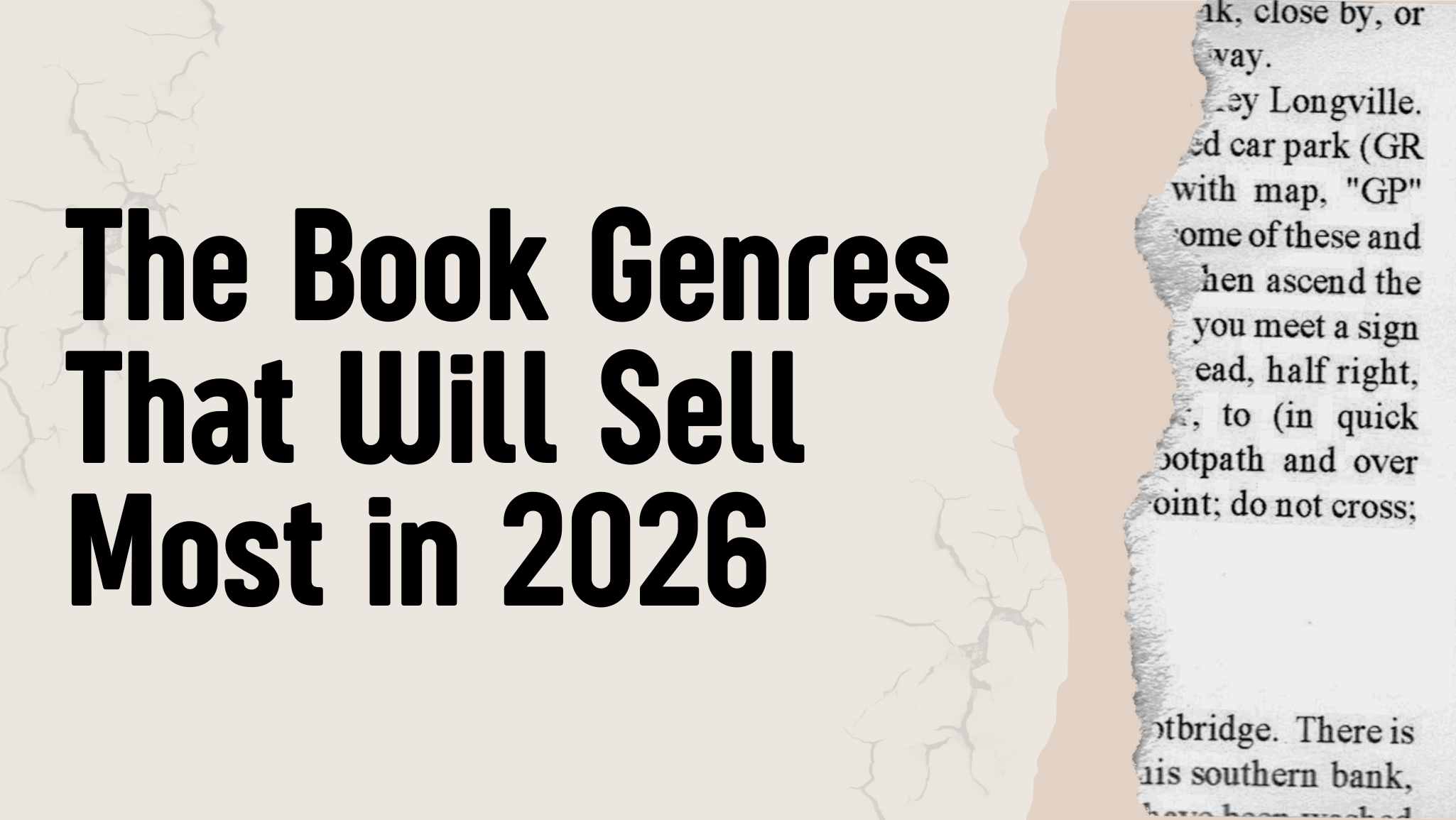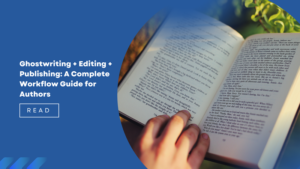If you’re planning to write a book, you’re probably wondering: which book genres will sell most in 2026? The publishing landscape is shifting rapidly, driven by BookTok trends, changing reader preferences, and the evolution of digital platforms. Based on current market data and industry forecasts, here are the genres poised to dominate sales in 2026.
1. Romance: The Unstoppable Revenue Giant
Let’s start with the undeniable champion. Romance generates approximately $1.5 billion in sales annually and accounts for nearly half of all mass-market paperback sales. This isn’t just a trend—it’s a publishing phenomenon that shows no signs of slowing.
Why romance continues to dominate:
Romance readers are voracious consumers who read far more books per year than readers of other genres. They’re also fiercely loyal to their favorite authors and subgenres. The genre has been revolutionized by self-publishing, with indie authors finding massive success on platforms like Kindle Unlimited.
Hot romance subgenres for 2026:
- Dark romance: Featuring morally complex characters and intense themes
- Contemporary romance: Relatable, modern love stories
- LGBTQ+ romance: LGBTQ+ fiction ranks as the second most sought-after fiction genre among literary agents, with nearly half actively seeking diverse, inclusive stories
- Romantic comedy: Light-hearted, escapist reads that offer emotional warmth
The bottom line: If you can write compelling romance, you have access to the most reliable and profitable book market in publishing. Romance generates over $1.4 billion yearly, with indie authors dominating via Kindle Unlimited.
Also Read: The Bestselling Secret: Many of Your Favorite Authors Ghostwriting Services
2. Romantasy: The Hybrid Phenomenon
The fusion of romance and fantasy—dubbed “romantasy”—has exploded into one of publishing’s hottest categories. Books like Fourth Wing have fueled this trend, with readers gravitating toward immersive fantasy worlds infused with romantic tension.
What makes romantasy so successful:
This genre delivers the best of both worlds: the escapism and world-building of fantasy combined with the emotional satisfaction of romance. It’s particularly popular among younger readers but has significant crossover appeal with adult audiences.
Why 2026 will be big for romantasy:
While romantasy may be heading toward its peak with a potential plateau coming in the next year or two, for now this beloved BookTok genre is still top of the reading list for many readers. This means 2026 represents a golden window for authors entering the space—there’s still room for newcomers, especially those who can carve out unique niches within the genre.
Series like “A Court of Thorns and Roses” continue inspiring new authors and fueling massive fan communities. Publishers are actively seeking manuscripts in this space, making it one of the most in-demand categories for both traditional and self-publishing.
Success strategy: Focus on immersive world-building, complex magic systems, enemies-to-lovers dynamics, and morally gray characters. Think epic stakes combined with swoon-worthy romance.
Also Read: The Global Market for Books: Should You Consider International Book Publishing?
3. Young Adult Fiction: The Agent Favorite
Here’s a surprise: Young Adult fiction is the most in-demand fiction genre for 2025, with 56 mentions across literary agent and editor profiles, dominating the list and outpacing the second-place genre by seven selections.
Why YA continues to thrive:
Young adult readers are highly engaged and loyal, often forming strong connections with books and authors. But here’s the secret: adults are reading YA too. Approximately 78% of YA fiction buyers are adults, giving the genre unprecedented crossover appeal.
Hot YA subgenres for 2026:
- YA fantasy and romantasy
- YA thrillers
- YA science fiction
- YA contemporary with diverse perspectives
- Dark academia settings
YA books also frequently land film and TV adaptations, which further fuels demand and provides authors with additional revenue streams and platform-building opportunities.
Important note: There are now two distinct YA markets emerging. Traditional YA (targeting ages 13-16) is seeing new imprints launch specifically for this younger demographic, while older YA is morphing into spicier, darker forms that appeal to adult readers.
Also Read: Publishing for Niche Audiences: How to Succeed in Smaller Markets
4. Thrillers and Psychological Suspense: Year-Round Winners
Thrillers remain consistently popular, and many thrillers are being adapted into streaming series, fueling even more demand. This genre benefits from binge-worthy narratives and the streaming effect—readers who love thriller series on TV are hungry for similar experiences in book form.
Why thrillers sell:
- Fast-paced plots that keep readers hooked
- Easy to market through “if you liked X, try Y” comparisons
- Strong word-of-mouth potential
- Consistent bestseller list presence
Trending thriller subgenres:
- Psychological thrillers exploring identity and mental health
- Domestic suspense
- Crime fiction and police procedurals
- Techno-thrillers incorporating AI and modern technology
- True crime-inspired fiction
2026 opportunity: Thrillers are ripe for the romance infusion that’s transforming other genres. From science fiction to historical fiction, thrillers to cozy mysteries, a new genre class is likely to emerge in every main category from this draw to spicy books. Romantic suspense and thrillers with substantial romantic subplots are positioned for significant growth.
5. Fantasy and Science Fiction: Immersive Escapism
Fantasy has exploded in popularity, especially among younger readers, offering the ultimate escape from real-world stress with sprawling worlds, magic systems, and complex characters.
Key fantasy trends for 2026:
- Epic fantasy series with intricate world-building
- Urban fantasy set in contemporary settings with magical elements
- Fantasy with diverse cultural influences beyond Western European traditions
Science fiction trends:
Science fiction earns approximately $420 million yearly by mirroring tech-driven anxieties, with themes like AI ethics and climate collapse growing more relevant daily. The genre is pivoting from traditional space operas to more grounded “lab-coat thrillers” that blend near-future technology with suspenseful storytelling.
The sci-fi opportunity: Approximately 70% of science fiction buyers are men, representing an underserved market. If you can write compelling sci-fi, you’re tapping into an audience that’s hungry for content and often overlooked by the female-dominated publishing industry.
Emerging trends: “Hopepunk” science fiction offering optimistic futures (think “The Martian”) is countering dystopian fatigue, while STEM romances combining nerdy love stories with scientific concepts are gaining traction.
6. Cross-Genre Hybrids: The Future of Fiction
Here’s where things get really interesting. Readers in 2025 are more open than ever to books that cross traditional genre boundaries, with stories blending elements of sci-fi, mystery, horror, and historical fiction attracting widespread attention.
Why hybrid genres are exploding:
Today’s readers want fresh combinations of familiar elements. They’re bored with rigid genre conventions and excited by unexpected mashups. Genre hybrids outperform single genres by 30-40% in sales, proving today’s readers crave fresh combinations of familiar elements.
Successful hybrid examples:
- Historical romance with mystery elements
- Science fiction thrillers
- Fantasy horror
- Contemporary fiction with magical realism
- Cozy mysteries with romantic subplots
Strategy for 2026: If you write in multiple genres or have diverse interests, don’t force yourself into a single category. The market is rewarding authors who blend genres in innovative ways. Just make sure your hybrid makes thematic sense and delivers on both genre promises.
7. Nonfiction: Specific Categories Are Booming
While fiction dominates bestseller lists, certain nonfiction categories are experiencing significant growth:
Self-help and personal development: Books about mindfulness, personal finance, resilience, and wellness continue to sell strongly. The post-pandemic focus on mental health and self-improvement shows no signs of waning.
Memoirs and biographies: Political books remain highly popular due to global political dynamics, with memoirs of political figures achieving remarkable success. However, any compelling life story with universal themes can find an audience.
Pop culture analysis: Pop culture books that analyze cultural trends with extensive research and compelling commentary on entertainment and social movements continue to thrive.
True crime: The appetite for true crime shows no signs of diminishing, particularly stories that examine psychological motivations and social justice issues.
Business books: Books on entrepreneurship, leadership, and business strategy remain steady sellers, especially when authors can offer unique frameworks or contrarian viewpoints.
What’s Losing Steam?
It’s equally important to know what’s trending downward:
Vampire fiction and paranormal romance: While there will always be dedicated readers, the market is oversaturated and traditional publishers are no longer actively seeking these manuscripts.
Dystopian YA: Post-Hunger Games, the market became flooded and readers moved on to other trends.
Generic literary fiction without hooks: Literary fiction that doesn’t have a clear concept, unique voice, or compelling story hook is increasingly difficult to sell.
Important caveat: Genre “death” is often overstated. Every genre has dedicated readers, and self-publishing allows authors to find their audience even when traditional publishers aren’t interested. However, if you’re seeking a traditional publishing deal, understanding what agents and editors are actively acquiring matters significantly.
The Publishing Model Matters Too
Genre choice isn’t just about what readers want—it’s also about how you plan to publish:
Best for self-publishing: Romance, romantasy, thrillers, and fantasy series perform exceptionally well in self-publishing because of:
- Voracious reader appetite for frequent releases
- Kindle Unlimited’s profit-sharing model
- Ability to rapid-release books in series
- Direct connection to readers through social media
Best for traditional publishing: Literary fiction, most nonfiction, and books requiring significant platform building or media attention often benefit more from traditional publishing’s resources, though this is changing.
Hybrid approach: Many successful authors use both paths strategically—self-publishing in lucrative genre fiction while pursuing traditional deals for prestige projects or nonfiction.
How to Position Your Book for Success in 2026
Choosing the right genre is only the first step. Here’s how to maximize your chances:
1. Leverage social media, especially TikTok: BookTok has become the primary discovery mechanism for new books. Creating book-themed content, character aesthetics, and plot summaries can make titles go viral. Romance and fantasy books in particular thrive on TikTok and BookBub.
2. Focus on series potential: Readers want to binge content. If you can deliver a compelling series with recurring characters or a connected world, you’ll build a more loyal audience and generate more revenue over time.
3. Prioritize diverse narratives: The industry and readers are actively seeking stories from underrepresented perspectives. Books centered on diverse identities, cultures, and experiences aren’t just socially important—they’re also in demand.
4. Think about adaptation potential: With streaming services hungry for content, books that would translate well to screen have added value. This is particularly true for thrillers, fantasy, and YA.
5. Build your audience before you publish: Authors who have spent time building engaged audiences find themselves with more leverage when negotiating with publishers and more success when self-publishing.
The Bottom Line
If your goal is to write a book that sells in 2026, these genres offer the strongest opportunities:
- Romance (all subgenres) – Most reliable revenue generator
- Romantasy – Hottest hybrid category with massive fan engagement
- Young Adult Fiction – Most sought-after by agents and publishers
- Thrillers and suspense – Consistent performers with streaming boost
- Fantasy and science fiction – Strong escapist appeal and series potential
- Cross-genre hybrids – Innovation rewarded with 30-40% higher sales
- Strategic nonfiction (memoirs, self-help, pop culture, business)
But here’s the most important advice: Don’t just chase trends. The books that truly break out are written by authors who are genuinely passionate about their stories and have unique perspectives to share. Market awareness should inform your decisions, not dictate them.
Write the book that excites you, in a genre you genuinely love, with an understanding of where your work fits in the current marketplace. That combination of passion and strategy is what creates lasting success.
The publishing industry is more accessible than ever, with multiple paths to readers. There are many good self publishing companies India looking for new authors. Learn how to publish your book and start your literary journey. Whether you’re writing steamy romance, psychological thrillers, or epic fantasy, 2026 offers unprecedented opportunities for authors who understand their audience and commit to delivering exceptional stories.
What genre are you planning to write in 2026? Are you considering any of these trending categories, or are you committed to a different path? Share your thoughts in the comments below.





